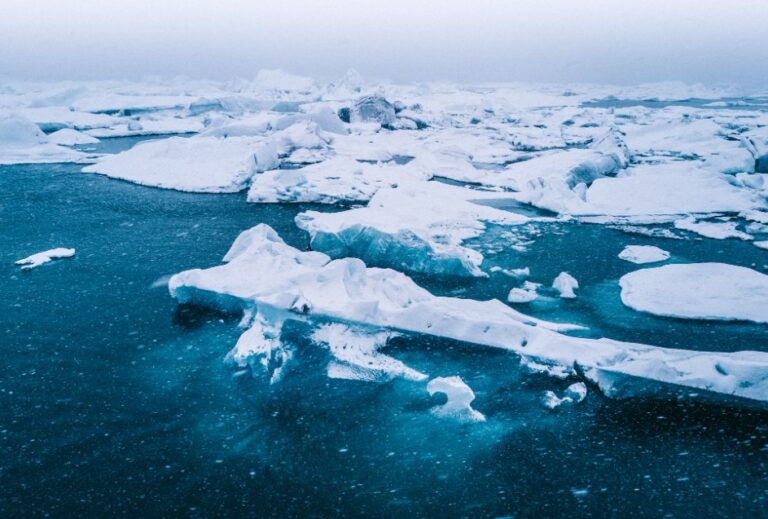An overwhelming body of scientific evidence points to human activity as a major driver of the Earth’s climate change, making this issue one of the most critical global concerns of our day. The claim that Earth’s climate has a history of natural fluctuation is often at the centre of these debates.
Notwithstanding this general agreement, some remain skeptical, claiming that the present climate changes are nothing more than the planet’s natural cycle and have nothing to do with humans.
This view is completely at odds with the generally accepted scientific consensus, which states that the main causes of the current climate crisis are elements that humans have caused.
In this article, we will explore five common claims made by climate change skeptics, delving into the scientific responses to each assertion.
Table of Contents
The 5 most common climate change skepticism claims
1. Climate change is beneficial
Longer growing seasons and higher agricultural productivity are two potential beneficial outcomes of climate change, according to some skeptics. Scientists are concerned that the negative effects, including increased sea levels, more frequent and severe weather events, and ecosystem disruption, may exceed any possible positive ones.
When natural disasters like droughts, floods, or fires destroy crops and houses, people often flee to safer areas in the hopes of starting again, but they run the risk of becoming victims of human trafficking, forced labor, or other forms of abuse.
2. No consensus among scientists
A common argument put forward by those who deny the existence of the changing climate is that scientists disagree on the matter. Absolutely not! Scientific consensus is close to perfect.
But there is strong evidence from a number of studies, including those from the IPCC, indicating human activities are the primary driver of climate change. Comprehensive assessment reports summarizing the most recent climate change research are released on a regular basis by the IPCC. The reports always stress that humans are to blame for the climate change.
The consensus on anthropogenic climate change is also supported by scientific organisations around the world, including NASA, NOAA, and other national academies of sciences. The increasing global temperature, the melting ice caps, and the altered weather patterns are all pieces of the puzzle that have brought this community together in solidarity.
3. Climate change is natural and real
The Earth has gone through cycles of warming and cooling, according to some sceptics, thus climate change is nothing new. The Earth’s climate has changed naturally over geological periods, but the changes happening now are different because of how fast they are and how they are related to human actions.
Factors including variations in greenhouse gas concentrations, changes in solar radiation, and volcanic activity influence the intrinsic climate variability in Earth’s history. The combustion of fossil fuels, deforestation, and industrial activity are the main human-induced factors that have contributed to the recent and increased global warming, according to the scientific consensus.
The accelerating pace of modern-day global warming is more strongly correlated with the impact of human activities, even if natural climatic variability is recognized. In order to move towards a more sustainable future and lessen the effects of climate change, it is essential to understand this difference.
4. Animals and plants can adapt to climate change
Sceptics argue that some species can adjust to a changing climate, suggesting that worries about ecological disruptions and biodiversity loss are exaggerated. Although some species are able to adapt, many may not be able to keep up with the enormous challenges posed by the current rate and scale of climate change.
Variations in migration patterns or mating schedules are examples of short-term physiological or behavioural adaptations that some species may display. But in the face of situations that are always changing and unexpected, these adaptations might not be enough to guarantee long-term survival. Additionally, some ecosystems and species are at a higher risk than others because they have specific needs for their environment or have limited capacity for dispersal.
Changes brought about by climate change, such as hotter temperatures and acidification of the oceans, have the potential to upset ecosystems’ delicate balance and affect the accessibility of resources that are vital to different species. Because of this, predator-prey dynamics can change, species distributions can shift, and biodiversity can be lost.
5. Climate change is real but it’s too late for a solution
A feeling of fatalism permeates this assertion, which implies that the consequences of changing climate will be permanent regardless of our actions in the present moment. Although certain outcomes are unavoidable, we can still assist protect Earth’s ecosystems from the worst of it by taking swift and consistent action to cut emissions of greenhouse gases.
The Paris Agreement’s goal of keeping global warming below 1.5C is attainable if governments, corporations, and individuals start acting swiftly.
Read also: Is the limit of 1.5 degrees for global warming realistic and achievable?












